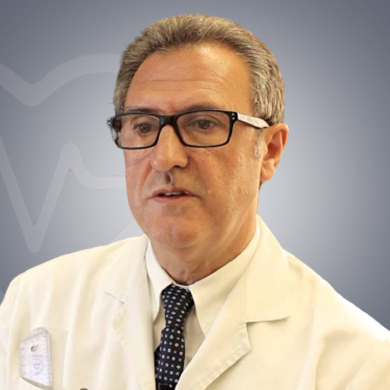
Orthopaedic Surgeon
Dexeus University Hospital , Barcelona, Spain35 Years of experience
Speaks: English
Dr. Enric Caceres is a reputed orthopaedic surgeon working at the Dexeus University Hospital, Barcelona, Spain. He specializes in operations related to the spine and the musculocutaneous area. He is currently head of the department and professor of Orthopaedic Surgery and Traumatology (UAB) at ICATME, at the Hospital Universitari Dexeus in Barcelona. FORBES magazine distinguished Dr. Enric Cáceres among the best specialists in traumatology and orthopaedic surgery in Spain. He was previously the Chief of the Guard Hospital University "Germans Trias-Pujol". Badalona. Barcelona, ??from 1984 to 1992.
Dr. Enric has been a part of many research papers published in distinguished medical journals. He is also a member of many medical societies such as President of the Catalan Society of COT 2006-2008, Member of the National Commission of the Specialty 2008-December 2012, and a Member of the Medical Commission of Futbol Club Barcelona. He is fluent in Catalan, Spanish, and English.
Let us have a look at the number of conditions treated by Dr. Enric Caceres::
Sports medicine specialist manage the conditions of patients through both surgical and non surgical methods for musculoskeletal system of the body. Their focus though is to find a solution which is non operative and can be resolved through therapy. Therefore, physical or occupational therapies or getting referred to an orthopedic or sports surgeon is the logical next step.
There are several kinds of signs and symptoms that sports injuries or conditions may entail such as
As it becomes clear that your being active in sports is a cause of your discomfort, please immediately seek out professional medical help. Loss of movement, pain and swelling are early indicators of a sports resultant condition. Acute injuries and overuse injuries are very prevalent in sportspersons and you need the doctors intervention incase you are suffering due to any of them.
9 am to 5 pm, Monday to Saturday are the operating hours of the doctor. The recuperation or rehabilitation stay post procedure is not included in the time mentioned for procedure here.
We have listed here for you the several kinds of procedures that Dr. Enric Caceres performs.
The primary goal of the procedures are restoring joint function and reducing the pain felt by the patient. The doctor may need to replace the musculoskeletal part of the body or even repairing it could be the best solution. Comprehensive is the word that describes the entire treatment process with the sports medicine specialist and the procedure has to be followed up with seamlessly implemented rehabilitation process.

Share Your Experience about Dr. Enric Caceres

Dr. Enric Caceres has over 35 years of experience in his field of medicine.
He specializes in operations related to the spine and the musculocutaneous area.
Yes, Dr. Enric Caceres provides online video consultation through MediGence.
It costs 606 USD to consult online with Dr. Enric Caceres through MediGence.
He is also a member of many medical societies such as President of the Catalan Society of COT 2006-2008, Member of the National Commission of the Specialty 2008-December 2012, and a Member of the Medical Commission of Futbol Club Barcelona.
Dr. Enric is a specialist in treating and conducting surgeries related to the bones and joints in the body. Some of his primary procedures are knee and hip replacement along with other limb related procedures.
He can be easily consulted by registering your profile with MediGence and writing down your inquiry. A meeting with the surgeon will be scheduled. Following which the consultation can be done.
A sports medicine specialist is consulted by not just professional sportspersons but children and teenagers and by people who indulge in personal fitness programs. Please visit this doctor if you are looking to get treatment, management or prevention of sports injuries or conditions. Also, incase you are in recovery from a sports injury, the doctor will provide you with medications for reducing pain, swelling, splints or supports, healing treatments and varied exercises.
Please find here the many tests that are recommended before and during consultation by a sports medicine specialist.
The health gradient of the patient and their procedure cum treatment readiness becomes clear via the tests done. As the sports medicine specialty is directly linked with the musculoskeletal system of the patient, the orthopedic tests becomes increasingly relevant to show the improvement seen with the treatment. The muscle balance and strength i.e. tests which define the range of motion and cardiological tests are equally if not important..
You must go to see a sports medicine specialist under the following circumstances.
We have outlined the many reasons where it is imperative to visit a sports medicine specialist. Acute injuries which happen suddenly or chronic injuries which become more serious with time are both dealt with by sports medicine specialists. The doctor helps you through the recovery process via the right nutrition, lifestyle, exercise guidance and with the right physical exams.